4
Section One: History
A) The Residential School System
Exercise 1: Notebook Prompt
We are asked to honour these stories with open hearts and open minds.
Which part of the chapter stood out to you? What were your feelings as you read it? (50 words)
When reading chapter 15 of The Final Report of the Truth and Reconciliation Commission of Canada, I was struck by the harm inflicted upon Indigenous students, particularly the manipulation tactics used to suppress their beliefs and culture. It saddens me to read about how these individuals went through so much in order to erase their cultural identities. Additionally, it frustrates me to learn how gender differences were also present, as girls were encouraged to do more quiet activities, while the boys participated in more competitive sports.
Exercise 2: Notebook Prompt
Briefly define (point form is fine) one of the keywords in the padlet (may be one that you added yourself).
Indigenous body cultures refer to the various practices indigenous people engage in that allow them to express themselves and connect them to their bodies. Specific practices, healing rituals, dance, ceremonies, and much more can serve as a vital link between the land, spirit and cultural identity of these individuals.
Exercise 3: Complete the Activities
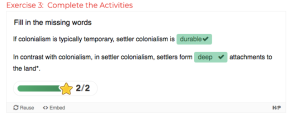

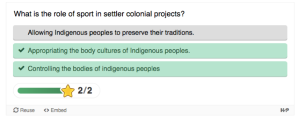
Exercise 4: Notebook Prompt
Although we have discussed in this module how the colonial project sought to suppress Indigenous cultures, it is important to note that it also appropriates and adapts Indigenous cultures and “body movement practices” (75) as part of a larger endeavour to “make settlers Indigenous” (75).
What does this look like? (write 2 or 3 sentences)
This process involves appropriating indigenous body movements such as rituals, ceremonies, dance, etc., to reflect the identities of settlers. By doing this, it does not reflect the understanding of their importance and sacred significance to Indigenous culture. In Indigenous cultures, these body movement practices serve a great importance and influence to their lives. When cultures who are not Indigenous engage in body movement practices, this diminishes the value and history surrounding them and reinforces colonial narratives.
D) The Colonial Archive
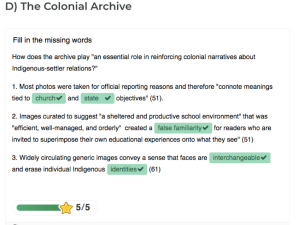
Section Two: Reconciliation
A) Reconciliation?
Exercise 5: Activity and Notebook Prompt
Visit the story called “The Skate” for an in-depth exploration of sport in the residential school system. At the bottom of the page you will see four questions to which you may respond by tweet, facebook message, or email:
When residential staff took photos, what impression did they try to create?
When reading this story, it is heartbreaking to hear about the experiences Indigenous children went through, and the forced actions imposed on them throughout their time at residential schools. I believe that when residential staff were taking photos, they aimed to give the impression to the public that Indigenous children were accommodating and changing to reflect the ways of life of colonial settlers. Additionally, this reflected further exploitation, as these photos served to show proof to the public that their lessons were “working”. This story also informed me that these photos are often misconstrued to the public even today, as some argue that these photos appear to show that these individuals were supported and positively encouraged to play sport – which is not the case. Although Indigenous people in this story highlight that they loved playing sports at these schools, they also communicate how playing sport was used as a big distraction to prevent them from focusing on the harms they endured, and that they were made to play sports to assimilate into a different culture.
B) Sport as Medicine
Exercise 6: Notebook Prompt
Make note of the many ways sport is considered medicine by the people interviewed in this video.
This video highlighted many stories and sport experiences of Indigenous athletes and explains the importance of sport and how it is considered medicine for their culture. Aidan Baker, an Indigenous lacrosse player, reflects on his own experiences and his grandfathers (who was a residential school survivor). He states how the sport of lacrosse has been considered a medicine for himself and struggles in his life, but also for his grandfather who experienced the trauma of residential schooling. Additionally, Aidan mentions how he believes sport acts like a medicine to his people, and is a gift from his creator. William Nahanee in this interview was a residential school survivor and states how playing sports were considered fun during his time there because it was therapy to him. Furthermore, Chief Robert Joseph mentions how he still carries the traumatic experiences with him from the residential school he was placed into and emphasizes how the happiest moments he had in school was when he was playing sports. He also mentions how sport is a crucial element to the health and well-being of Indigenous people.
C) Sport For development
Exercise 7: Notebook Prompt
What does Waneek Horn-Miller mean when she says that the government is “trying but still approaching Indigenous sport development in a very colonial way”?
When Waneek Horn-Miller states that the government is “trying but still approaching Indigenous sport development in a very colonial way”, she is emphasizing the need for more change and indigenous representation in professional sports. Waneek Horn-Miller highlights how she wants other indigenous athletes and her daughter to experience the same opportunities that she had. Additionally, she mentions how the government needs to start understanding the importance of working with indigenous athletes to promote effective change. Furthermore, she emphasizes the need for Indigenous led sports.
Exercise 8: Padlet Prompt
Add an image or brief comment reflecting some of “binding cultural symbols that constitute Canadian hockey discourse in Canada.” Record your responses in your Notebook as well.
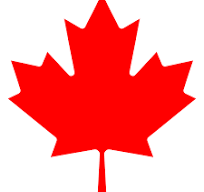
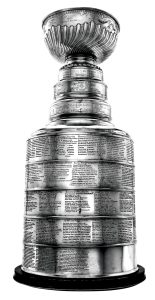
Mini Assignment 4
Action 87 is a key component of the Truth and Reconciliation Commission’s 94 Calls to Action. This action calls attention for the government, sport organizations, and policies to recognize and highlight the history of Indigenous people in sport and their accomplishments. To support this action, there have been several steps made along the way.
Firstly, the establishment of the Tom Longboat Award honours Indigenous athletes for their incredible achievements and contributions to sport in Canada. This award celebrates the strengths, skills, and talents of Indigenous athletes and pushes Indigenous representation in sport.
Secondly, the Canadian Olympic Committee recognizes the harm caused by residential schools and the need for reconciliation. This committee respects and recognizes the contributions Indigenous athletes make, and actively works alongside Aboriginal sport organizations in Canada to improve funding, access, and inclusivity for Indigenous athletes. Additionally, this committee acknowledges Indigenous land, while also encouraging others to do the same. Furthermore, some sport events have featured Indigenous welcome ceremonies and uses their platforms to raise awareness about Indigenous cultures and histories.
Communities and individuals (particularly settlers) can contribute to addressing TRC’s Calls to Action in many ways. As a society, it is important that people educate themselves deeply about the past and current experiences of Indigenous people and expand their knowledge on the negative impact and lasting repercussions of residential schools in Canada. Supporting and advocating for inclusivity and actively challenging discriminatory language used by individuals in society, can contribute to a more respectful environment and promote change. Additionally, participating in active acknowledgment of the land in which we live on, and recognizing the lives and history of Indigenous culture, can also promote more understanding. Overall, as there has been substantial progress when it comes to fulfilling Action 87, ongoing commitment and partnership within the government and sport organizations are crucial to advance reconciliation further.
References
Indigenous History Resource Page. Olympic.Ca. https://olympic.ca/indigenous-history-resource-page/#:~:text=The%20Canadian%20Olympic%20Committee%20(COC,that%20includes%20the%20Indigenous%20peoples
Tom Longboat awards. Aboriginal Sport Circle. https://www.aboriginalsportcircle.ca/tom-longboat-awards

